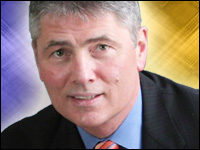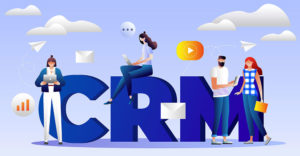
Enterprise 2.0 came to Boston this week, and that made me happy because it is one of a very small number of events that I don’t fly to. Being a native, it’s nice to take the train into the city and to be able to sleep at home. Despite this convenience, I was only able to attend on Tuesday, and I concentrated on the vendor show floor at the expense of missing some very good keynotes and sessions.
The single session I attended focused on the emerging importance of video as a content medium in the enterprise, and it was good. Video as a content medium encapsulates what’s good and interesting about the offerings in a space that is still in its early days, still looking for its voice. That voice gets clearer and stronger each year, and many people, myself included, thought that this year’s edition of the show had more vigor and was more interesting than last. Given the recession hanging over everything in 2009, perhaps that is not surprising.
An Angle on Sustainability
Many, if not most, of the business processes that vendors offered support for involved some form of crowdsourcing to capture information from the broad market as well as for capturing ideas from employees. Some capture customer data, others employee data, and still others focused on the channel.
The result is some form of insight into the target population and collaboration that can be used to advance a company’s mission either internally or by way of servicing and selling to customers.All that is good, and it’s an advance over simply using social media as a tool to indiscriminately blast a sales pitch to the world, but I also think there is more that we can do. I think a new paradigm that Enterprise 2.0 and social CRM are an ideal fit for is a world that demands greater sustainability in its business processes, and that day is just dawning.
Sustainability can take many forms, and they are not necessarily what you might think. For instance, customers are a sustainable resource, ever think of that? You do when your market is saturated. In that context, social technology is a no-brainer, but we need to find even better ways to use it.
The Finite Factor
There’s a more conventional definition of sustainability that we should all remain aware of too. At the same time that the show attendees were cruising Boston Harbor, the president was addressing the nation regarding the geyser in the gulf. In part he said, “Drilling for oil these days entails greater risk. After all, oil is a finite resource. We consume more than 20 percent of the world’s oil, but have less than 2 percent of the world’s oil reserves. And that’s part of the reason oil companies are drilling a mile beneath the surface of the ocean — because we’re running out of places to drill on land and in shallow water. For decades, we have known the days of cheap and easily accessible oil were numbered.”
There, he said it. Finite. Demand isn’t finite, though — it grows, and in such situations, limited supply always leads to higher prices. What does this mean to your business processes that use travel?
The most obvious is the green angle, one in which companies use new technologies that help reduce travel overhead while still being able to interact with customers to do business. In that definition of sustainability, many of the companies and products straining to get your attention at events like Enterprise 2.0 gain significance. One of my favorites is new video technology. Condensing ideas from a document or slide presentation into short, snappy videos that customers can access from their desktops may be the most important growth area in the front office. Altus, Saba and several other companies had booths at the conference, and their offerings are impressive.
Another growth area is online meetings and conferences. We’re all old hands at this point at using Web meeting applications. I use the various products several times each week to take briefings, for instance. Web meetings are a great way to foster collaboration within an organization and with customers. But these one-off meetings can only take you so far, which is why I am so interested in the next level, the Web conference.
Relatively few people have experienced the power of a Web conference in which thousands of customers use through their desktops to attend sessions, network and interact in ways similar to the live thing. The difference is that everyone saves big bucks on travel and entertainment, not to mention wear and tear on the travelers. Already companies like Oracle and Salesforce.com are using Web meetings for internal activities, and I have seen Oracle and others attempt these forums for customers. Companies in the space include ON24, Unisfair and Social27, and there are more.
If I had to identify the theme of Enterprise 2.0 — the movement, not the conference — it would be this idea of a new paradigm, of sustainability in business. More than simply doing more with less, sustainability is about doing better and different. I can’t wait to see how this plays out.
Denis Pombriant is the managing principal of the Beagle Research Group, a CRM market research firm and consultancy. Pombriant’s research concentrates on evolving product ideas and emerging companies in the sales, marketing and call center disciplines. His research is freely distributed through a blog and Web site. He is working on a book and can be reached at [email protected].





















































